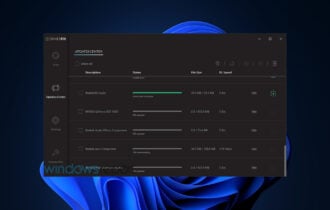Driver updates will no longer cause compatibility issues
2 min. read
Updated on
Read our disclosure page to find out how can you help Windows Report sustain the editorial team Read more
Key notes
- Microsoft says that they will evaluate better the quality and reliability of a Windows 10 driver update by analyzing the data coming from cohorts.
- The measures will incorporate data from machines running in two distinct customer groups: Windows Insider Program (WIP) and Retail.
- We wrote many articles about drivers so read more about them in our Windows 10 Drivers section.
- Do you have any problems with updates? Check out the Windows Update & Security Hub for more information.

Unfortunately, drivers are one of the top causes of problems, even if you installed them through a Windows Update. Some number of driver issues interfered with the installation of major feature updates in 2019 but that can be expected as Microsoft needs to work with so many manufacturers and devices.
No more drivers compatibility issues in Windows 10
However, this isn’t an implacable issue, and Microsoft has been working on changes to avoid situations when a driver update causes compatibility issues.
The Optional Updates screen from to Windows Update was a big step and another idea was that hardware manufacturers would able to block updates when incompatible drivers when you try to install incompatible updates.
Analyzing cohorts might be a solution
For those who are not familiar with the term, cohorts are basically insiders and everyone who offers feedback.
Well, Microsoft says that they will evaluate better the quality and reliability of a Windows 10 driver update by analyzing the data coming from cohorts. In this case, the cohorts refer to a set of systems and devices that share the same targeting attributes including HWID, CHID, and OS version.
This way, Microsoft will be able to identify any driver that fails to meet the requirements.
In the reverse method, if a driver causes problems, they will be able to find out which are the affected devices. The final measure will be to block the problematic driver update only for the affected devices, judging by their hardware ID, revisions, and OS version of Windows 10.
Looking forward, during that period, Windows 10 will not offer the drivers to any PC with the known incompatibility, thus protecting them.
Other data sources for measures
Microsoft says that the measures will incorporate data from machines running in two distinct customer groups: Windows Insider Program (WIP) and Retail.
The reasons are somehow obvious. The WIP data comes from users who willingly want to provide this data with increased levels of detail and the retail data is collected from the general Windows ecosystem and allows Microsoft to monitor the quality issues on released drivers right away.
[wl_navigator]








